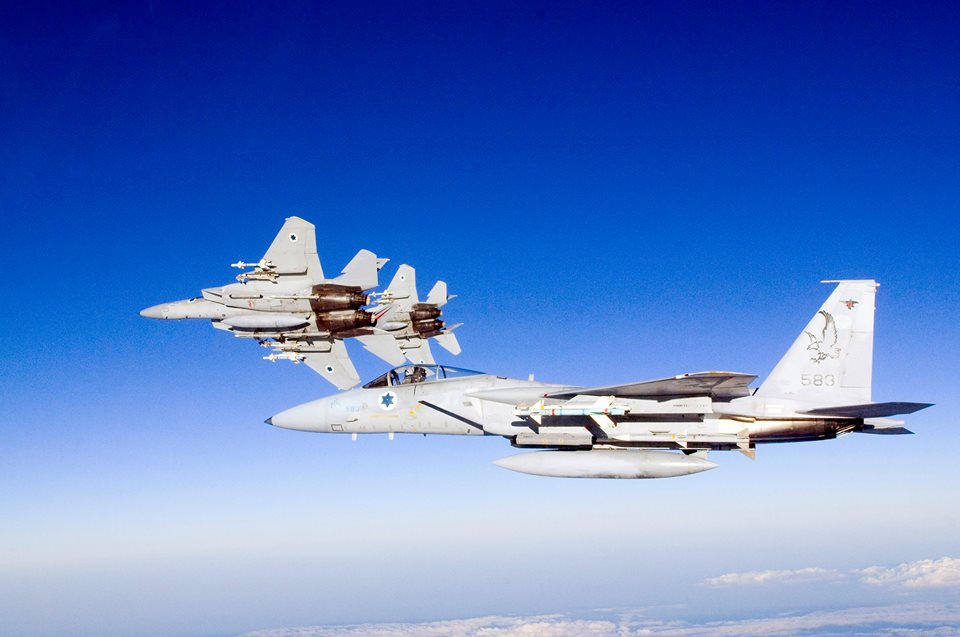The Israeli Air Force (IAF) needed about 50 4th-generation fighters to last them into the 1990s and maybe beyond. The McDonnell Douglas F-15A/B Eagle and the Grumman F-14A Tomcat would be the two primary candidates for such a procurement
The US was constantly attempting to “tread carefully” in the Middle East throughout the 1970s. Even though it seems strange to us now, at the time, they were working to protect and preserve the balance of power in the area. Following the end of the Yom Kippur War in October 1973, the UN-backed agreement between Israel and Egypt in January 1974, the subsequent Israeli withdrawals, and the signing of the second disengagement agreement in September 1975, there was reason to believe that the US government would view Israel favorably regarding any potential purchase of 4th-generation fighters.
The Israeli Air Force (IAF) needed about 50 4th-generation fighters to last them into the 1990s and maybe beyond. Shimon Peres, the country’s defense minister, made the request in June 1974 for a limited group of seasoned IAF pilots to be permitted to test and assess the two primary candidates for such a purchase. These candidates would be the McDonnell Douglas F-15A/B Eagle and the Grumman F-14A Tomcat, as described by Bertie Simmonds in his book F-15 Eagle.

The Shah, a pilot himself, was impressed by the F-14A’s performance at this point, and the Iranian government had already examined it and placed an order before the 1979 Iranian Revolution. The AIM-54 Phoenix, a 100-mile missile that helped give the F-14A the reach to protect the fleet against long-range Soviet bombers and cruise missiles (since the Tomcat was designed around it), was one of the features that set the F-14 and F-15 apart from one another. It might even start a dogfight in the appropriate hands.
Yet, both would be carefully considered. The F-15, on the other hand, was built for air superiority over the battlefield, something the Israelis found appealing when you consider the battles they had fought since gaining independence in 1948.
One of the first TF-15s was flown by IAF commander Benny Peled in 1974, but because it was a preproduction model, it was lacking several of the systems that would have made it combat-ready. When visiting Naval Air Station Miramar, David Ivry, a former IAF P-51 Mustang and Dassault Ouragan pilot, also piloted a Tomcat. He is said to have been impressed by the F-14, if not a little let down by the need to take special care with the problematic TF-30 turbofans during air combat maneuvers with a US Navy A-4 Skyhawk.
While the US had not authorized the Israelis to actually pitch Tomcat against Eagle, a team was eventually established to independently analyze both machines. Amnon Arad, a former Mirage and F-4E pilot and squadron leader, would serve as the team’s leader. In addition to Israel Baharav, a former Mirage pilot and squadron leader during the most recent Yom Kippur War, Assaf Ben-Nun, an F-4E pilot, Omri Afek, and navigator Aharon Katz would be flying with him. The remaining members of the team were ground crew and employees from Israeli Aircraft Industries.

The evaluations, coming from the most seasoned and combat-tested jet fighter pilots at the time—these pilots had a combined total of about 24 kills—would have been fascinating to read at the time. They intended to mimic the annoying MiG-25Rs that were flying obtrusively over Israel, seeing how these teen-series jets handled everything from low and slow targets to fast targets.
The two-seat F-15, a full-scale development aircraft with the new systems on board, was flown around ten times, and the McDD F-15 simulator was used a lot. Sorties were conducted against A-4 and F-4 aircraft, and the Israelis were particularly taken by the F-15. They discovered the F-15 could easily outperform both aircraft, the weapons systems were “user-friendly,” the Eagle’s agility was astonishing, and the power allowed them to “sustain” like no other aircraft they had flown previously. Also, the cockpit provided unmatched visibility for dogfighting.
They were disappointed in the Tomcat’s dogfighting capabilities, which the IAF excelled in, compared to the two-seat F-14 that the team flew at Miramar. An air combat maneuver mission against the unassuming A-4 Skyhawk frequently ended in a deadlock. It was soon obvious that the F-15 Eagle was the finest option for the IAF, and even better, the plane was far more affordable per unit than the Tomcat.
However, political obstacles to an F-15 sale would not be resolved until that second disengagement agreement in September 1975, and a month later, the US decided to supply the Eagle in large quantities. In accordance with the provisions of the ‘Peace Fox I’ agreement, Israel started getting its new fighter in the form of four full-scale development aircraft in December 1976. Under the terms of ‘Peace Fox II,’ Israel then started receiving two F-15Bs and 19 F-15As.
Israel would have to pay roughly $625 million for this, which was replaced by Peace Fox III, for which 18 F-15Cs and eight F-15Ds were ordered. Also, in the early 1990s, the US government handed the IAF 10 early F-15A and B aircraft that had been refurbished as a thank you for Israel’s assistance during Desert Storm, when it was attacked by Iraqi Scud missiles.
F-15 Eagle is published by Mortons Books and is available to order here.
Photo by: Israeli Air Force and U.S. Navy

